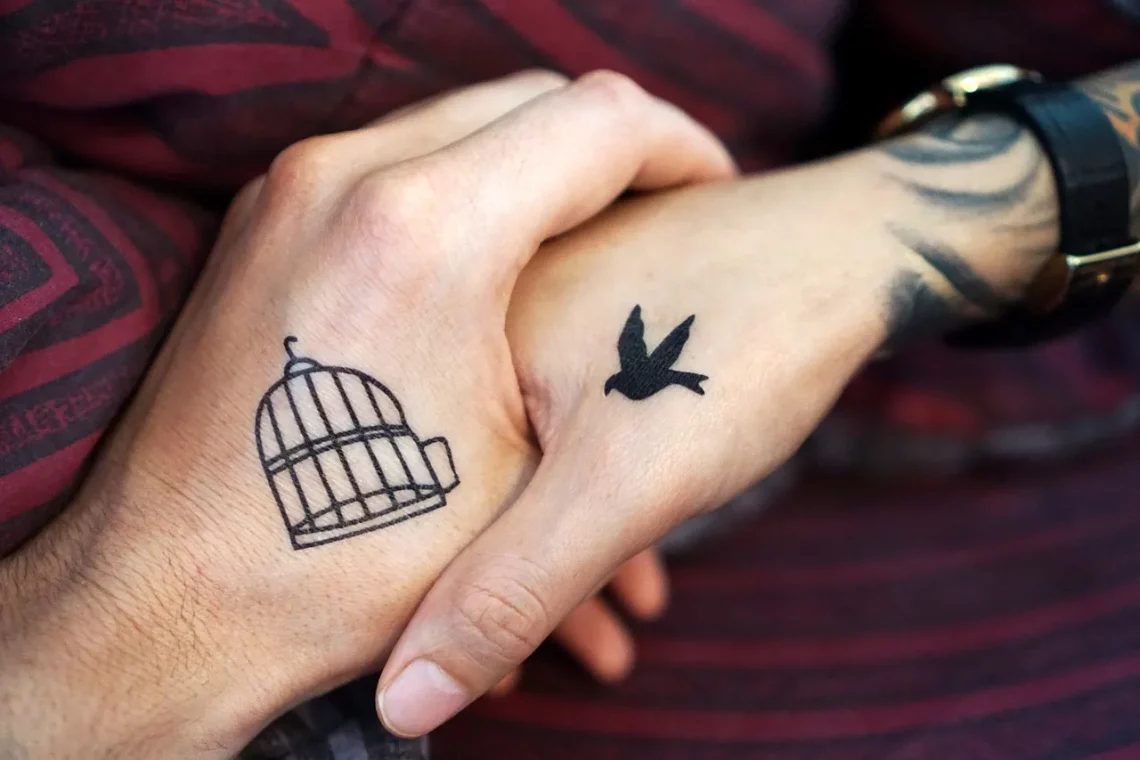
Exploring the Art and Symbolism of Chinese Fighting Fish Tattoos
Tattoos have long served as a form of self-expression, allowing individuals to convey their personal stories, beliefs, and cultural backgrounds through intricate designs. Among the myriad of tattoo motifs, the Chinese fighting fish, also known as the betta fish, stands out not only for its striking visual appeal but also for its rich symbolism. The betta fish, revered in many Asian cultures, embodies qualities such as strength, resilience, and grace. These attributes resonate deeply with individuals who choose this design, often reflecting their personal struggles and triumphs.
The vibrant colors and flowing fins of the betta fish make it an attractive choice for tattoo enthusiasts. However, its significance goes beyond mere aesthetics. In Chinese culture, the fish is associated with good fortune and prosperity. Traditionally, these fish are kept in homes and businesses as symbols of success and abundance. As tattoos become more prevalent in contemporary society, the symbolism of the Chinese fighting fish continues to evolve, attracting a diverse range of people seeking to infuse their ink with deeper meaning.
In this exploration, we will delve into the artistry and symbolism of Chinese fighting fish tattoos, examining their cultural significance, design variations, and the emotional connections individuals may have with this unique tattoo choice.
The Cultural Significance of the Betta Fish
The betta fish, native to Southeast Asia, carries profound cultural meaning, particularly in Chinese traditions. Historically, these fish were bred for their fighting abilities, leading to an enduring association with strength and courage. In ancient times, betta fighting was a popular form of entertainment and a symbol of masculinity. However, the fish’s significance transcends its combative nature; it also represents adaptability and survival in challenging environments.
In Chinese culture, the betta fish is often linked to the concept of yin and yang. The fish’s vibrant appearance and graceful movement embody the balance of opposing forces, encapsulating the idea that strength can coexist with beauty. The betta’s ability to thrive in low-oxygen water mirrors the resilience required to overcome life’s obstacles. This duality makes the fish a powerful symbol of perseverance and elegance, resonating with those who have faced adversity.
Moreover, the betta fish is a common motif in Feng Shui, where it is believed to attract positive energy and prosperity. Many people incorporate images of the fish into their homes or businesses to invite success and good fortune. This cultural significance extends to tattoos, where individuals often choose the betta fish design as a talisman for luck and prosperity in their personal lives.
As tattoos continue to gain acceptance as a form of art and expression, the betta fish serves as a reminder of the rich cultural tapestry from which it originates. By choosing this design, individuals honor the traditions and beliefs associated with the fish while also personalizing its meaning to reflect their unique journeys.
Design Variations and Artistic Interpretation
The beauty of Chinese fighting fish tattoos lies in their versatility and the myriad ways artists can interpret them. Tattoo enthusiasts can choose between a realistic portrayal of the fish, emphasizing intricate details like its flowing fins and iridescent colors, or opt for more abstract representations that focus on the fish’s graceful movement and symbolic meaning.
Realistic tattoos often depict the betta fish in vibrant colors, showcasing its natural beauty. Artists may use techniques such as watercolor, realism, or neo-traditional styles to bring the fish to life on the skin. The choice of colors can carry additional meaning; for instance, red is often associated with prosperity and passion, while blue symbolizes tranquility and harmony.
On the other hand, abstract designs may emphasize the fluidity of the fish’s movement, utilizing swirling lines and dynamic shapes to capture the essence of the betta. These designs may incorporate elements of water, waves, or even floral patterns, enhancing the overall aesthetic while adding layers of meaning.
Additionally, some individuals choose to combine the betta fish with other symbols or elements to create a more personalized tattoo. For instance, pairing the fish with lotus flowers, which symbolize purity and enlightenment, can convey a message of spiritual growth and resilience. Alternatively, incorporating elements like dragons or koi fish can blend different cultural symbols, enriching the tattoo’s narrative.
Ultimately, the design of a Chinese fighting fish tattoo is an intimate reflection of the wearer’s personality and experiences. Whether opting for a detailed representation or an abstract interpretation, the chosen design encapsulates the wearer’s unique journey and the qualities they aspire to embody.
The Emotional Connection to Betta Fish Tattoos
Choosing a tattoo is often a deeply personal decision, and for many, the Chinese fighting fish holds a special emotional significance. Individuals may opt for this design to commemorate personal battles, celebrate victories, or symbolize traits they admire and strive to embody.
For those who have faced challenges in their lives, the betta fish can serve as a reminder of their resilience. The fish’s ability to thrive in adverse conditions resonates with individuals who have overcome obstacles, making it a powerful symbol of strength and determination. Wearing this tattoo can serve as a daily affirmation of their journey, instilling a sense of pride and empowerment.
Additionally, the betta fish is frequently associated with transformation and growth. Just as the fish undergoes changes throughout its life cycle, individuals may find inspiration in its journey. This connection can be particularly meaningful for those who have experienced significant life changes or personal growth, as the tattoo serves as a visual representation of their evolution.
Moreover, the betta fish tattoo often fosters a sense of community among those who share a love for this design. Many individuals find solace in connecting with others who have similar tattoos, creating bonds over shared experiences and meanings. This sense of belonging can be invaluable, especially for those who feel isolated in their struggles.
In essence, the emotional connection to a betta fish tattoo is multifaceted, encompassing themes of resilience, transformation, and community. As individuals wear their tattoos, they carry not only the imagery of the fish but also the stories and experiences that have shaped their lives.
Choosing the Right Placement for Your Tattoo
When considering a betta fish tattoo, one of the most crucial decisions is its placement on the body. The location of a tattoo can significantly impact its visibility, personal meaning, and the overall aesthetic. Each area of the body offers unique advantages and considerations, making it essential for individuals to carefully reflect on their choices.
For many, the arm serves as a popular canvas for tattoos, allowing for easy visibility and the option to showcase the design or keep it private. A betta fish tattoo on the forearm or bicep can be a striking statement, often inviting conversations about its meaning and significance. This placement also allows for a larger design, enabling artists to highlight the intricate details and vibrant colors of the fish.
Other individuals may opt for more discreet placements, such as the back, shoulder, or side. These areas allow for a more personal connection to the tattoo, as they may only be visible to the wearer and close friends or family. A betta fish tattoo in these locations can serve as a private reminder of strength and resilience, tucked away yet always present.
Additionally, factors such as pain tolerance and the size of the design should be taken into account when choosing placement. Areas with more flesh, such as the thigh or upper arm, may offer a more comfortable experience compared to bony areas like the ribs or ankle.
Ultimately, the choice of placement is a deeply personal decision that should resonate with the individual. Whether opting for visibility or discretion, the placement of a betta fish tattoo can enhance its meaning and significance in the wearer’s life.
In conclusion, Chinese fighting fish tattoos are a powerful blend of artistry and symbolism, offering individuals a means to express their personal stories and cultural connections. With their rich cultural significance, diverse design possibilities, and profound emotional relevance, these tattoos continue to inspire and resonate with people from all walks of life. As you contemplate the possibility of adorning your skin with the beauty of the betta fish, remember that this choice is not solely about aesthetics; it is also an opportunity to reflect on your journey and the qualities you wish to embody.
**Disclaimer: This article is for informational purposes only and should not be considered medical advice. For any health concerns, please consult a qualified healthcare professional.**




